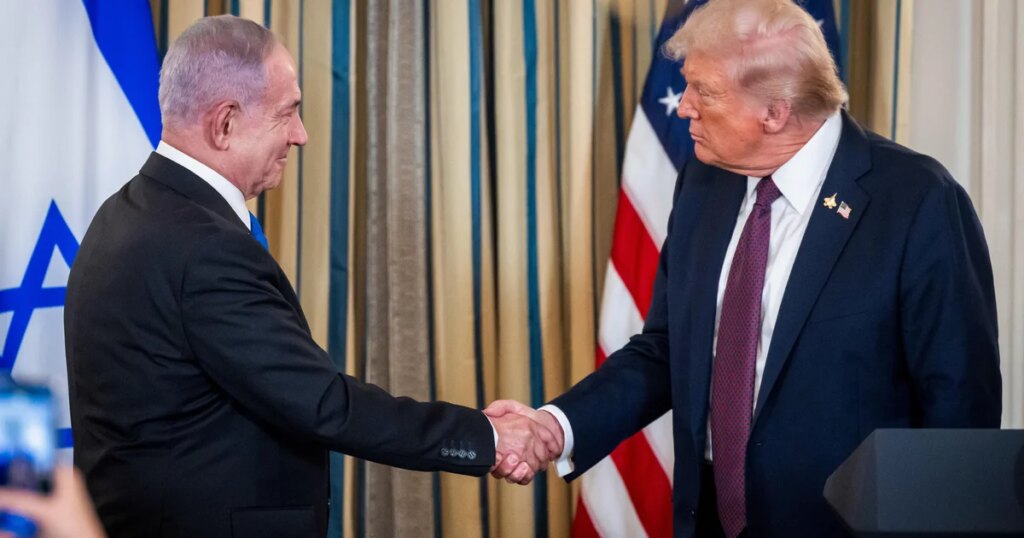A recent ceasefire agreement involving Israel and Hamas marks a significant phase in the complex negotiations surrounding peace in Gaza. As part of this ceasefire, initiated by senior U.S. officials, a 72-hour countdown has begun for Hamas to release all remaining Israeli hostages, prompting Israel to reciprocate by releasing Palestinian prisoners and allowing humanitarian aid to flow into Gaza. This agreement stems from an extensive, multi-month diplomatic effort to forge a comprehensive peace plan, highlighting key interactions among various stakeholders, including U.S. officials and leaders from the Middle East.
| Article Subheadings |
|---|
| 1) Ceasefire Proposal Acceptance |
| 2) Collaborative Refinement in New York |
| 3) Apologies and Building Trust |
| 4) Finalizing Hostage Exchanges |
| 5) Pathway to Implementation |
Ceasefire Proposal Acceptance
In August 2025, a notable shift occurred when Hamas accepted a new ceasefire proposal from Egypt and Qatar. This pivotal moment stemmed from extensive discussions and negotiations led by U.S. diplomats. The proposal was built on principles originating from prior negotiations as well as previous hostage release arrangements. U.S. officials confirmed that the proposal was molded to reflect the interests of Israel, Hamas, and former President Trump, thus laying the groundwork for what would evolve into a 20-point peace plan designed to stabilize the region.
Collaborative Refinement in New York
During the United Nations General Assembly in September, key U.S. figures, including Special Middle East envoy Steve Witkoff and senior advisor Jared Kushner, undertook a significant task of refining the 20-point plan. Their primary objective was to collaborate with Qatari leaders, specifically Prime Minister Sheikh Mohammed bin Abdulrahman Al Thani, to enhance the proposal through careful wording and framework adjustments. Following discussions with Qatar, Witkoff and Kushner approached other Arab leaders to gather feedback and further shape the initiative, demonstrating a concerted effort to unify regional support and commitment.
Apologies and Building Trust
The interactions gained momentum when negotiations transitioned toward reconciliation following past grievances. On September 29, during a crucial White House meeting, Prime Minister Benjamin Netanyahu extended an apology to Qatar concerning a significant Israeli airstrike in Doha that had caused collateral damage. This gesture was deemed essential for mending strained relations and restoring a degree of trust among involved parties. U.S. officials remarked that the apology was perceived positively and played a vital role in building necessary leverage for advancing negotiations. Many observers noted that public sentiment in Gaza appeared to shift, as families increasingly began to hold Hamas accountable for the ongoing conflict, catalyzing a willingness among Hamas leaders to engage further in discussions regarding hostage releases.
Finalizing Hostage Exchanges
As the situation developed, a series of high-stakes meetings commenced in Sharm El Sheikh, bringing together representatives from Turkey, Qatar, and Egypt alongside Israeli officials. Significant progress was achieved during discussions held from October 5 to 6, illustrating a palpable shift in the tone of negotiations. Both sides agreed on the release of 20 Israeli hostages in exchange for Palestinian prisoners, an agreement that marked a turning point in the dialogue. U.S. negotiators witnessed a newfound flexibility among participants, observing that trust was being built through shared interactions and mutual understandings. This growing rapport facilitated the acceptance of the 20-point plan, emphasizing the pivotal engagement between various stakeholder groups in the region.
Pathway to Implementation
Following successful negotiations, an implementation plan emerged, focusing on the critical aspects of peacekeeping that needed to be addressed. The discussions enshrined a two-phase approach: an initial phase centered around the hostage release and a subsequent phase aiming to pave the way for a long-term ceasefire. U.S. officials conveyed that President Trump underscored the importance of thorough execution, with the explicit message that players on both sides should adhere to their commitments. This resulted in renewed attention on operational details to ensure that the agreements reached would be adequately fulfilled, mitigating potential challenges that might arise during the execution stage.
| No. | Key Points |
|---|---|
| 1 | A ceasefire proposal accepted by Hamas marks a turning point for negotiations surrounding peace in Gaza. |
| 2 | U.S. officials facilitated a collaboration aimed at refining the proposed 20-point plan during the UN General Assembly. |
| 3 | Trust-building measures, including an apology from Israeli leadership to Qatar, were vital for achieving momentum in negotiations. |
| 4 | Engagement between Turkey, Qatar, and Egypt alongside Israeli representatives led to consensus on crucial hostage exchanges. |
| 5 | The negotiations adopted a two-phase implementation plan that emphasizes the importance of adherence to agreements from both sides. |
Summary
The recent ceasefire between Israel and Hamas represents a significant development in the long-standing conflict and the efforts toward a lasting peace solution. Through intricate negotiations involving various stakeholders, including U.S. officials, key Middle Eastern leaders, and both Israeli and Hamas representatives, a foundation has been laid for future cooperation. Building trust and fostering meaningful dialogue among all parties are crucial steps in ensuring the success of the 20-point peace plan aimed at stabilizing the region and mitigating humanitarian crises.
Frequently Asked Questions
Question: What prompted the ceasefire agreement between Israel and Hamas?
The ceasefire agreement was reached as a result of prolonged negotiations led by U.S. officials, who facilitated discussions among various stakeholders to address key issues, including the release of hostages and Palestinian prisoners, as well as the potential flow of humanitarian aid into Gaza.
Question: How did the U.S. play a role in the peace negotiations?
The U.S. acted as a mediator throughout the negotiation process, leveraging diplomatic channels to refine proposals, foster trust-building measures, and encourage meaningful dialogue between Israeli and Hamas leadership, as well as other regional partners.
Question: What are the phases outlined in the peace plan?
The peace plan consists of two main phases: the first involves the exchange of hostages and Palestinian prisoners, while the second focuses on establishing a more permanent ceasefire and negotiating long-term arrangements, including disarmament and governance issues in Gaza.


